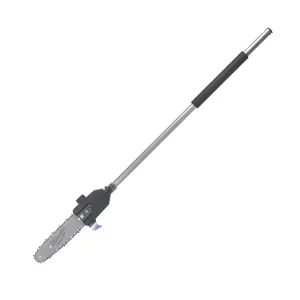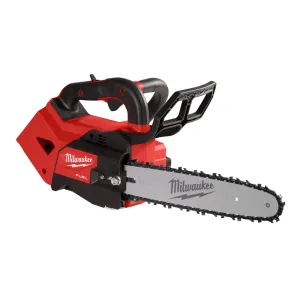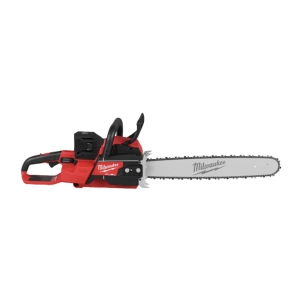If you’re just starting out with chainsaws, it might help first to understand some of the key terminology around the technical specifications of chainsaws:
Bar size
As stated at the start of this post, bar size refers to the length of the metal section of the chainsaw around which the chain moves in order to cut. It is the most important dimension in terms of determining the overall size of your chainsaw.
Bar measurements typically range from 8 to 20 inches or approximately 20 to 51 cms (but some specialist professional chainsaw bars can be up to 90cms). Most chainsaws however will have a bar size of 12 to 20 inches, or 30 to 51 cms.
Broadly speaking, the longer the bar length, the wider / deeper you can cut - so chainsaws with long bar lengths will be used by farmers and professional arborists tackling larger trees.
However, you should always subtract around 3” or 7.5 cms from a bar length to understand its real cutting capacity. This is because it is very difficult to cut a tree trunk that measures the exact same length as the bar.
Chain pitch and gauge
Chain pitch is the distance on the chain between every other rivet (or the distance between three consecutive rivets) – divided by two. This measurement is usually expressed in inches. For example, the Milwaukee 30cm Bar chainsaw has a chain pitch of 3/8”. Large chainsaws might have a pitch of around ¾” and smaller ones, around ¼”.
Chain gauge refers to the thickness of the drive link – the metal cutting section of the chain. Some chainsaw users prefer a thicker gauge believing it to represent a longer-lasting chain.
However, this needs to be balanced with the overall weight of the chainsaw – the thicker the gauge, the heavier the chainsaw, and so the more power it requires to cut.
Chain speed
Chain speed refers simply to the speed at which the chain moves around the bar and therefore how quickly you can cut.
Chain speed is usually measured in metres per second. Theoretically, the slower the chain speed, the safer the work – as the chainsaw will be easier to control. However, this needs to be offset against the type of work you are undertaking. For very hard wood, you will need to aim for a higher chain speed.
If we take our Milwaukee 30cm Bar example, this particular chainsaw has a chain speed of 12.4 m/s. Compare this with Class 3 chainsaws which can operate at 28 m/s. Bear in mind that appropriate PPE must always be used when undertaking chainsaw work.
Now that you understand some basic chainsaw specification terminologies, let’s look at some of the other deciding factors.
Tree trunk and branch diameter
As we touched on when looking at bar length, think about the type of trees you will be working with. If they are typically small garden trees with diameters of less than 12 inches or 30 cms, then a chainsaw with a maximum bar size of 35 cms will be fine.
If you cannot envisage tree felling, or you’re just interested in pruning the branches of trees or cutting logs, then a chainsaw with a bar length of 30cms should suit.
Avoid thinking that a larger chainsaw would help cover all eventualities. Using a large-bar chainsaw for smaller branch or log cutting can produce more ‘kick-back’, and can be more difficult / unwieldy to use, not to say heavier to lift.
Using a chainsaw that is shorter than the trunk or branch diameter is not such a problem as you can make several cuts to meet in the middle.
On the whole, if you are new to chainsaws and are using them for domestic garden jobs, it is safer to start with a relatively smaller bar size.
Physical strength
In inexperienced hands, and without knowledge or correct PPE, chainsaws can be dangerous tools. It is better to acknowledge any physical strength limitations before buying a chainsaw.
Though they can vary dramatically in weight, a cordless battery powered chainsaw will be slightly heavier than a petrol chainsaw. There are benefits to both, so make sure you take everything into account before deciding.
Using our Milwaukee 30 cms Bar example again, this chainsaw weighs in at 6.4 kilos, or 14.11 lbs with the battery.
In summary, when deciding on the size of chainsaw to buy:
• Consider the type of project you need a chainsaw for and the likely diameter of the wood you intend to cut.
• Check the chainsaw weight. Think about your own physical strength and your ability to manoeuvre and control the full weight of a chainsaw.
• Familiarise yourself with chain speeds as they can help you understand the cutting capacity of the chain.
• Make sure you understand how to operate a chainsaw safely, and that you have equipped yourself with the correct PPE.








